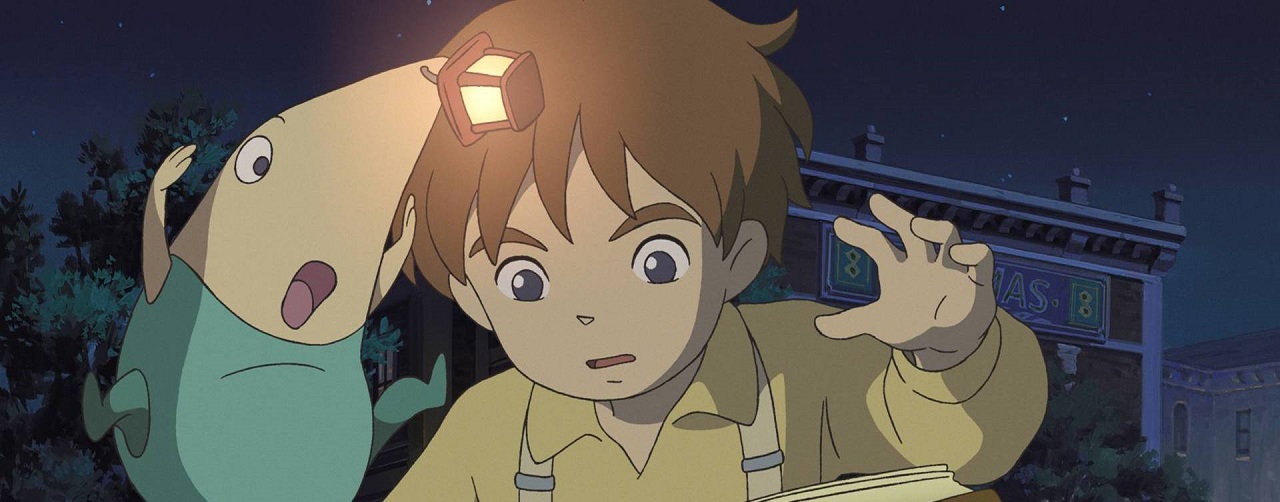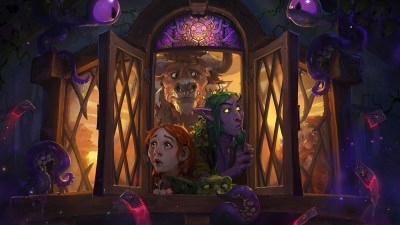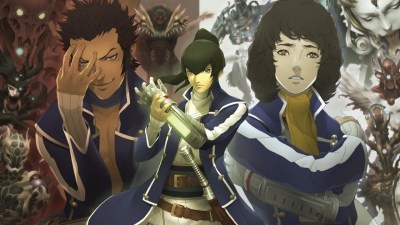A little over a year ago, Studio Ghibli and Level-5 Studios co-developed an RPG for the PlayStation 3 that was a call back to the Golden Age of the genre.
We recently sat down and returned to the magical world that is Ni No Kuni: The Wrath of the White Witch to relive this modern day classic.
Ni No Kuni is studio Ghibli’s first venture back into the videogame development since their 2002 release Magic Pengel for the PlayStation 2. Anime fans - and more specifically, fans of the legendary Japanese director Hayao Miyazaki - will recognize Ni No Kuni’s wonderful art style as a Stuido Ghibli production. Co-developer Level-5 Studios has previously developed such titles as Dark Cloud (PlayStation 2) and The White Knight Chronicles (PlayStation 3).
The world of Ni No Kuni is wonderfully vibrant and fully fleshed out, with every location feeling unique and full of purpose. Towns are populated with various inhabitants, and in studio Ghibli fashion not everyone is human. There are Cats, Mice, and Pig people populating the magic world of Ni No Kuni.
Indeed, much of Ni No Kuni feels like an interactive Ghibli movie; as fans of Ghibli movies, we really appreciated and marveled at how theatrical the game feels. The now iconic art style of Ghibli movies is ever-present and impacts every detail of the game. Monsters look and feel as though they have come straight out of celluloid, while the large dungeons have a story-book fantasy motif. All of this combines to make a wonderful fantasy tale that truly comes alive, as Ghibli often does so well with their films.
Ni No Kuni follows the adventures of the ever-earnest Oliver, a seemingly normal boy from a sleepy European Town. Oliver’s life is turned upside down when his mother’s sudden death leaves him alone, with no-one to turn to but his stuffed fairy toy, Mr. Drippy. However, hidden deep inside of Oliver is a magical power that revives Drippy into a living - and Welsh - Fairy King. Steffan Rhodri’s vocal performance and his Welsh accent help to make Mr. Drippy into one of the most adorable characters the genre has seen in a long time.
Tidy.
While Rhodri is the highlight of the voice acting, some of the other performances can get a little cheesy at times. Oliver delivers every line with the same boyish joy, regardless of the scene. But we grew to appreciate the hokey-ness of some of the dialogue as part of Ni No Kuni’s childlike fantasy story, and it fits within the world. As we travel with Mr. Drippy back to his magical home world to cure people of their broken hearts and challenge the Dark Djinn Shadar, we marveled at the attention to detail that Ghibli brings to this fantasy tale. There isn’t enough that can be said about how good this game truly looks - with its rolling hills and sprawling towns that fit right into a child’s fantasy story. No two locations look the same, and that is something that can’t always be said about modern gaming experiences.
Furthermore, the whole world is made more vibrant by an amazing soundtrack co-composed by the legendary Joe Hisaishi - of Studio Ghibli’s films fame - and Rei Kondoh, who composed the fantastic soundtrack for Okami. All of the in-game music was performed by the Tokyo Philharmonic Orchestra, which really gives it a grand feeling that stayed with us long after completion.
Ni No Kuni also brings an in-depth battle system that is more complex and deep than we originally thought it would be. Battles are fought with either the magical familiars that populate the world, or with Oliver’s powerful magic spells. Through most of the game, Oliver is joined by Esther and Swaine - both of whom can command three familiars each. This gives you a wide range of possible party combinations. There are well over 300 familiars to capture, and all of them can be evolved to more powerful forms, in a manner reminiscent of Pokemon.
As battles take place in real time, we would be constantly switching between the different types of familiars; while things start gently enough, the difficulty ramps up about a quarter of the way through. Boss fights can get difficult, with your opponent using devastating abilities that can wipe out your whole team if you’re not careful.
There is a base level of difficulty within Ni No Kuni that isn’t found in most modern games, and while there is some hand-holding, there almost isn’t enough at times. There are hidden stats within each familiar that determines stat growth; some familiars will be excellent at early levels but slow down, while others will be weak until the end of the game. This mechanic isn’t ever addressed, and it can becomes rather annoying. We had to grind for countless hours, finding the right familiars at the right time.
While the story can be completed in around 30-40 hours, a huge amount of optional side-missions can see you spending over 60 hours, depending on how much you explore. Granted, we did get lost in the massive world, and its entire task-based sidequests, but most of that padded time was in grinding up new familiars - just to see if they were viable or not at the end game. To be fair, the combat is extremely enjoyable, and never once did we stop having fun along the long grind to the end.
Another issue we found was that while the voice acting is very good, and the Studio Ghibli anime cut scenes are flat-out amazing, most of this content is front-loaded. The wonderfully-produced movies are heavy at the start of the game, which really hooked us in our first time around.
We understand that Ni No Kuni is already so large that the whole game cannot be video cut scenes, but we wish it was better spaced throughout the story. Moreover, the voice acted cut scenes rendered in engine dramatically fall off after the first half of the game. This leaves major plot moments near the end to play out in text, which is a shame.
Now, there will be some spoiler moments here, so you may want to skip this part. Don’t say we didn’t warn you.
While the game is called Ni No Kuni: The Wrath of the White Witch, we actually forgot about her as she is only teased through the first 80% of the game. Most of the game is spent dealing with the imminent threat of Shadar, and only Shadar knows of the existence of the White Which. While we appreciate this call back to Final Fantasy IV’s style of bait-and-switch plotting, it was jarring after we defeated Shadar and the game essentially almost goes to credits before it keeps going.
The defeat of Shadar felt like a logical ending point to the game, and everything that happens within the game only helps to reinforce that feeling. There is a Star Wars-style celebration that will leave you feeling good about yourself; you even get to see Oliver ride off into the sunset on his flying dragon. Then suddenly, you’re pulled back into the game to deal with the White Witch - who only now makes herself known. It almost feels like the developer packed two games’ worth of bad guys and plots into Ni No Kuni, and it hurts the pacing of the ending.
SPOILERS OVER
Furthermore, over the course of the long story there are new features rolled out to the player. Some of these come so late in the game that we didn’t even bother with them. There’s a crafting mechanic we never touched, and it feels tacked-on and under-utilized.
However, we do appreciate the 350 page Wizard’s Companion - an actual, readable book within the game. Some plot events even force you to have to read through a few chapters to solve a puzzle or riddle. But despite the huge amount of effort and attention that so clearly went into creating it, even this feels under-utilized, and largely ends up being a cool novelty.
Despite these problems with pacing, hokey dialogue and a grind-heavy ending, Ni No Kuni: The Wrath of the White Witch comes strongly recommended to any fan of RPGs. We’d go so far as to say that it’s sure to be a classic, talked about for decades.
Rarely does a game of such quality and charm come along, one that sweeps us up into our imagination and made us remember what it was like to be a kid again. As more and more developers go for a darker and gritty realistic feel in their games, Ni No Kuni stands out as a bright and colorful experience. It’s charming from beginning to end and while it’s not perfect - no game is - it’s a joyful and charming experience that harkens back to a bygone era.



